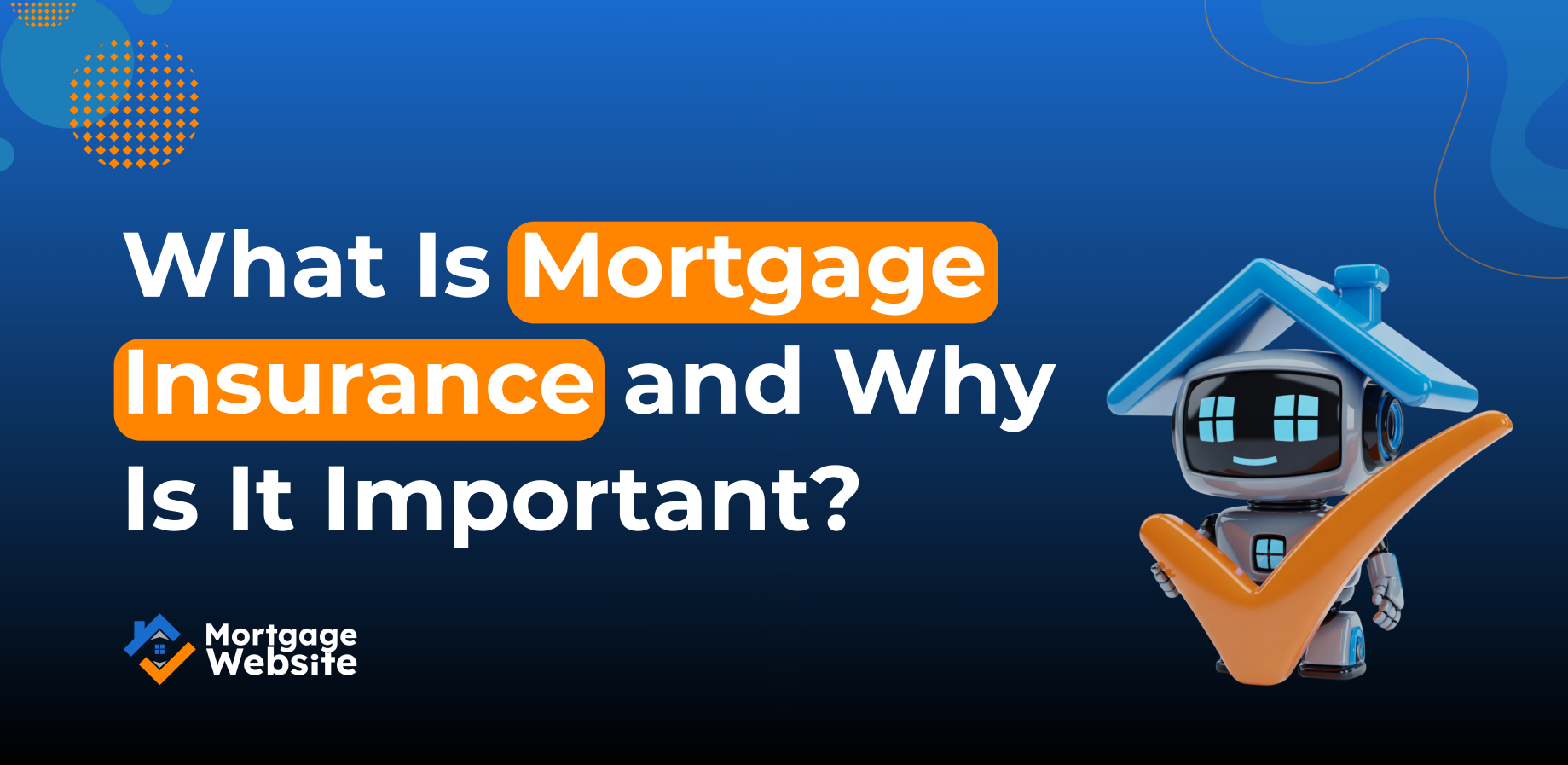Thinking about buying a home or applying for a mortgage? You’ve probably come across the term mortgage insurance. It might sound like just another added cost, but it actually plays a critical role in helping people achieve homeownership especially if you’re putting down less than 20%.
In this article, we’re breaking down what mortgage insurance is, why it exists, how it protects both you and your lender, and what you can expect in terms of cost. Whether you’re a first-time homebuyer or brushing up on the basics, this guide will help you make smart, confident decisions.
Key Takeaways
- 🛡 Mortgage insurance protects lenders if a borrower defaults on a home loan
- 🏠 PMI is typically required for conventional loans with less than 20% down payment
- 💼 FHA loans require mortgage insurance, regardless of your down payment
- 💸 You can cancel PMI in most cases once your home equity reaches 20%
- 📈 Mortgage insurance allows more people to qualify for homeownership
- 🧠 Knowing your options helps you save money and plan smarter
What Exactly Is Mortgage Insurance?
Mortgage insurance is not the same as homeowners insurance. Instead of protecting you, it protects the lender if you fail to make your mortgage payments. It’s a risk management tool that makes it easier for lenders to offer loans to buyers with smaller down payments.
Depending on the type of loan you choose, you may encounter different forms of mortgage insurance or similar fees.
Private Mortgage Insurance (PMI) is required for conventional loans when a borrower makes a down payment of less than 20%. It protects the lender—not the borrower—in case of default. PMI typically costs between 0.2% and 2% of the loan amount annually and is added to your monthly mortgage payment. The good news is that PMI can usually be removed once your loan-to-value (LTV) ratio reaches 78–80%.
Mortgage Insurance Premium (MIP) is required for all FHA loans, regardless of the down payment. It also protects the lender in case the borrower defaults. There are two components: an upfront premium (usually 1.75% of the loan amount, which can be rolled into the loan) and an annual premium that ranges from 0.15% to 0.75%. MIP typically lasts for the life of the loan unless you refinance into a conventional loan.
USDA loans include a guarantee fee, which functions similarly to mortgage insurance. This fee supports the USDA loan program and protects the lender. It includes an upfront fee of about 1% of the loan amount and an annual fee of around 0.35%, which is paid monthly. These fees make it possible for USDA loans to offer 100% financing in eligible rural areas.
VA loans for veterans and active-duty military members don’t require traditional mortgage insurance, but they do come with a funding fee. This one-time fee helps maintain the VA loan program and ranges from 1.25% to 3.3% of the loan amount depending on the borrower’s circumstances. Unlike PMI or MIP, there are no monthly insurance premiums with VA loans.
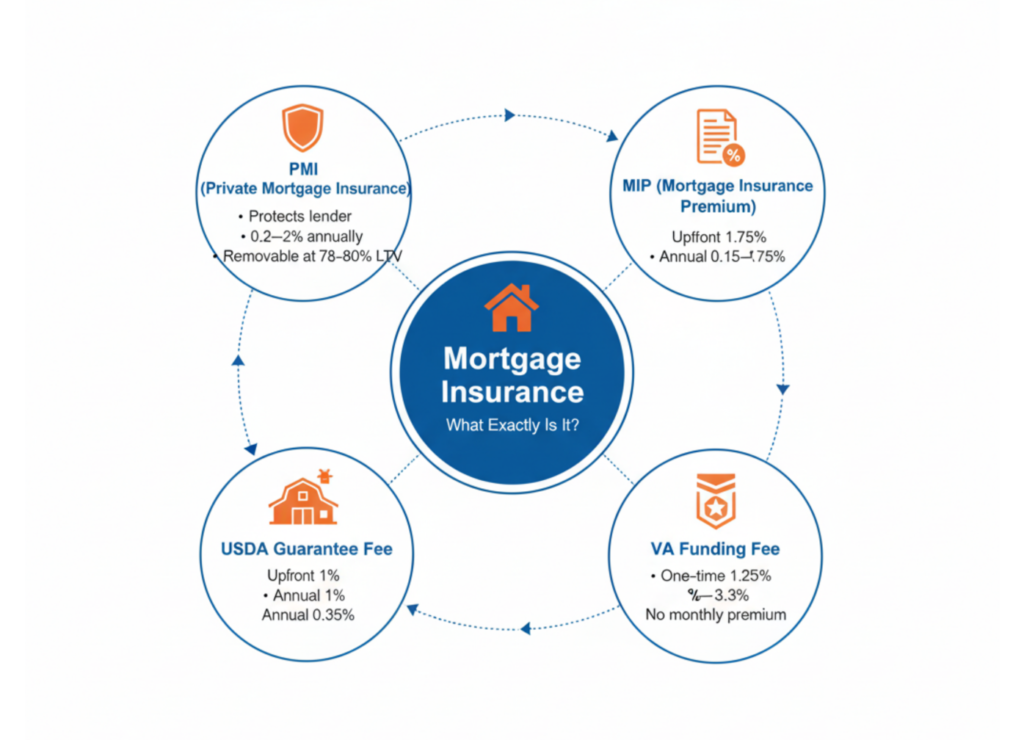
Why Mortgage Insurance Exists
Here’s a real-world scenario:
Let’s say you’re buying a $400,000 home with 5% down. That’s $20,000 upfront, meaning your lender is financing $380,000. That’s a significant risk for them.
🔢 More than 60% of buyers today put down less than 20%.
Without mortgage insurance, lenders might deny your application altogether. But with insurance in place, they’re more willing to approve loans with lower down payments—helping millions achieve homeownership.
Ready to Attract More Leads?
Launch your high-performing mortgage website fast no contracts, no hassle.
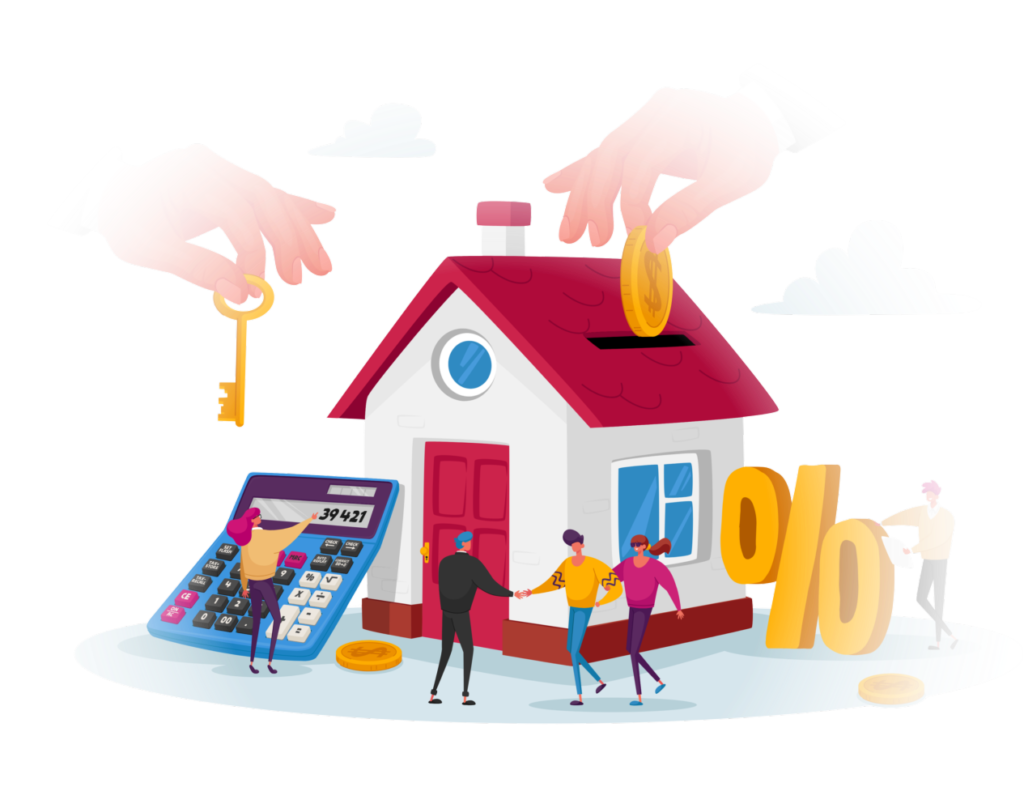
Types of Mortgage Insurance and How They Work
Conventional Loans – Private Mortgage Insurance
When your down payment is less than 20% on a conventional loan, the lender will typically require private mortgage insurance. This can be paid in a few ways:
As a monthly premium added to your mortgage payment
As a one-time upfront payment at closing
Or as a combination of both (split premium)
For example, if you borrow $300,000 and the insurance rate is 0.5%, your annual cost would be around $1,500—or about $125 per month.
FHA Loans – Mortgage Insurance
All loans backed by the Federal Housing Administration require mortgage insurance, regardless of the down payment amount. This includes:
An upfront insurance premium, typically 1.75% of the loan amount
An annual insurance premium, usually ranging from 0.45% to 1.05%
This type of insurance may remain in place for the entire life of the loan, depending on your specific loan terms.
VA Loans – No Traditional Mortgage Insurance
Loans backed by the U.S. Department of Veterans Affairs (VA) are a valuable benefit for eligible veterans, active-duty service members, and certain military spouses. One of the biggest advantages is that they do not require traditional mortgage insurance, even with no down payment.
Instead of monthly insurance premiums, VA loans include a one-time funding fee, which helps support the program and ensures continued access for future borrowers. The amount of the fee depends on factors such as:
Whether it’s your first time using a VA loan
The size of your down payment (if any)
Whether you’re using your full entitlement
USDA Loans – Affordable Financing for Rural Areas
Loans backed by the U.S. Department of Agriculture (USDA) are designed to help low-to-moderate income buyers purchase homes in eligible rural and suburban areas. One of the key benefits is no down payment requirement. However, to protect lenders, USDA loans include guarantee fees, which function similarly to mortgage insurance.
There are two types of guarantee fees:
Upfront fee: Typically 1% of the loan amount, paid at closing (this can often be rolled into the loan)
Annual fee: About 0.35% of the loan balance, paid monthly as part of your mortgage payment
Benefits of Mortgage Insurance
It might seem like a burden, but mortgage insurance can be a game-changer
💡 Opens the Door to Homeownership
Instead of waiting years to save 20%, buyers can become homeowners sooner.
💬 Helps You Compete in Hot Markets
Homes move fast. A smaller down payment with mortgage insurance lets you act quickly.
📉 Potential Tax Deductions
Depending on your income, you might be able to deduct PMI on your taxes.
🕐 Flexible Removal Options
For conventional loans, once your loan balance hits 78% of the home’s value, PMI is automatically canceled. You can also request cancellation once you reach 20% equity.
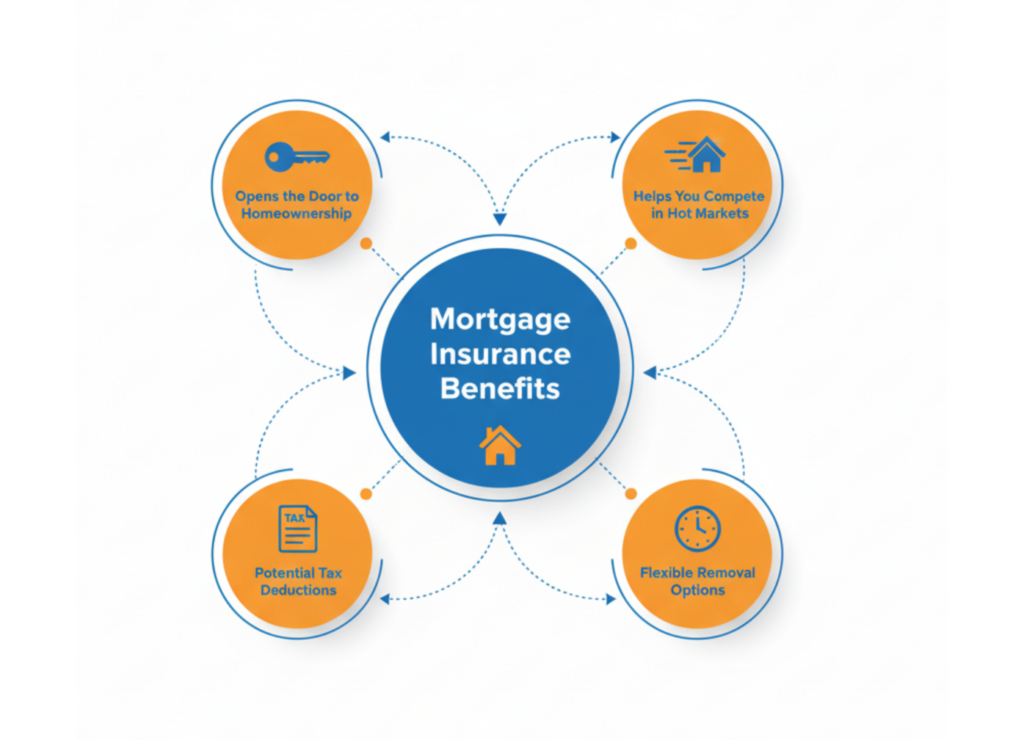
How to Reduce or Avoid Mortgage Insurance
Here are a few strategies to consider:
Put 20% down if you can afford it
Refinance once your home increases in value
Choose a lender-paid PMI option if it fits your financial goals
Shop around for the best mortgage and insurance terms
Tools to Manage Mortgage Insurance Smarter
Use a Mortgage Calculator
Before applying for a loan, use an advanced mortgage calculator—like the ones built into GetMortgageWebsite—to estimate how much you’ll pay in insurance.
These calculators factor in:
Loan amount
Credit score
Property value
Down payment
Loan term
➡️ This helps you compare loan types and choose the smartest path forward.
Manage Insurance and Clients With Ease
If you’re a mortgage professional, managing client data, quotes, and follow-ups related to insurance and loan scenarios can be overwhelming.
🎯 Enter TheBigBot CRM—an all-in-one mortgage CRM built to simplify your workflow.
Top Features Include:
📞 Phone, SMS & Email Integration
📅 Calendar & Task Scheduling
📊 Pipeline Tracking for Insurance Milestones
📢 Automated Reminders for PMI Removal
📈 Reporting & Analytics for Insurance-Linked Campaigns
With seamless integration with mortgage calculators, prebuilt loan content, and real-time lead forms, TheBigBot CRM takes the hassle out of staying compliant and organized.
Frequently Asked Questions
Do I always have to pay for mortgage insurance?
No. If you put down 20% or more on a conventional loan, you can avoid PMI altogether. VA loans also do not require it.
Does mortgage insurance benefit me?
Indirectly, yes. It helps you qualify for a loan with a smaller down payment and lets you buy sooner.
Is mortgage insurance mandatory?
Yes, in most cases if you put down less than 20%. But some programs like VA loans waive it entirely.
How fast can I get started?
From sign-up to launch, it typically takes 3-5 business days to get everything built and live.
Conclusion
Mortgage insurance might feel like an extra burden, but it’s actually a tool of empowerment. It opens the doors to homeownership for millions of Americans each year—especially when saving a large down payment just isn’t feasible.
Understanding the types, costs, and cancellation options puts you in control. And for mortgage professionals, using tools like GetMortgageWebsite and TheBigBot CRM ensures you deliver value, clarity, and trust to every client.
Ready to Attract More Leads?
Launch your high-performing mortgage website fast no contracts, no hassle.

